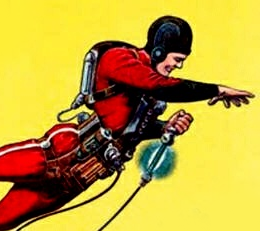What’s the most nerve-racking project to work on? A bridge? A plane? A nuclear bomb? How about food grade piping? Sure it doesn’t seem too bad, but welding in the food industry actually requires some of the most precise and pure workmanship possible. The consequences for doing a shoddy job can be deadly (literally). Here’s a basic intro into what it’s like to weld in the food world.
Of course, “food world” is a pretty broad term. It can range from pipe welds for a brewery to stainless steel baskets for a bakery and everything in between. The only real consistency is that you’re dealing with products which will eventually end up in someone’s stomach. This is why so much of food grade welding is centered on sanitation and cleanliness. For example, if your weld leaves a small niche where bacteria can form, it could potentially spread to the food. It happens all the time. In February 2017, a major cheese company had to recall over 20 different products after a potential listeria contamination was discovered in one of their supplier’s manufacturing plants.
Qualification and Pay
When it comes to welding within the food industry, there’s not “necessarily” a specific license or certificate required. At least not like how a doctor or truck driver can’t perform their job without being licensed. However, food and beverage companies have to adhere to a very strict set of FDA and USDA regulations. Beyond the FDA and USDA regulations, your welds have to be up to code as well. So while you don’t necessarily have to be certified to weld in the food industry, your work must comply with government regulations.
Because of this, most food and beverage companies require specific certifications. Sometimes this is a certification from a prominent welding organization such as the American Welding Society (AWS). If you’re not certain how welding certification works, check out our post on it here. Other times employers will simply have you perform a welding test during the interview process to ensure you know what you’re doing. Depending on the employer, they might also require a certain amount of education or experience. Essentially a company just wants to know you’re not going to poison a whole bunch of their customers or cost them millions in recalls (no pressure).
The actual pay range for a welder in the food and beverage industry is hard to nail down. The numbers can get as low as minimum wage and as high as $35 an hour or even more. Within the last 5 years, welders have started complaining about a drop in pay within the food industries. However, many food and beverage companies state that they’re willing to pay quite a bit for qualified and competent welders they can trust to get the job done right. Ultimately it comes down to your specific location, how much competition there is for welding jobs and what your role would be.
Are Robots Taking These Jobs?
And here we come to the 21st century’s million dollar question: Are welders in the food and beverage industry being replaced by robots. No and yes. Robots are particularly good at repetitive, precise tasks. More and more, big corporations are using robotic welders to perform repetitive tasks that require a high level of accuracy. For instance, robots are often used to cut food grade pipes perfectly to ensure all the pipes line up with one another (even a matter of a few degrees could mean the pipes don’t match).
However, Robotic welders have 2 major flaws. First, they’re incredibly expensive. For instance, a small brewery installing a new tank probably can’t afford a robotic welder (plus the cost of someone to operate it). Even renting a robotic welding solution means you’ll still have to hire someone to run it.
Secondly, robots are limited. They can only do what they’ve been programed and built to do. Your microwave is useful for heating something up, but ask it to sear a steak and you’re in for a disappointing surprise. Same concept applies with a robotic welder. A benefit humans have is our versatility. If you’re capable of performing an array of different welds in different situations, that can be a huge advantage over a robot. Specifically this plays a big role in maintaining equipment, which requires someone trained to handle a variety of different tasks. Often, the maintenance of food and beverage machinery can be just as important as its installation. For instance, in 2007, several people received care for a botulism outbreak. The source of the incident has been cited as cans of chili sauce from a well-known food company. When the FDA inspected the company’s facilities, they found improperly maintained equipment to be a contributing factor to the outbreak.
Skills to Focus On
Summarizing the huge variety of skills you might be required to know in the food and beverage industry is an impossible task. However, there are some basics that most companies will require. Often beverage facilities use stainless steel tubes with their machinery. This means a good understanding of purging (also called “back purging”) can be vital. While the shielding gas often protects the outside weld of a tube, the welding on the inside of the tube can be exposed to contaminants. To protect your weld on the inside of a pipe, you’ll often need to purge your workpiece. If you’re interested to learn more about purging, check out this post here. While purging isn’t always 100% necessary to protect your piece, it helps keep your weld from oxidizing. Oxidized welds can contain contaminates and leave crevices or pores which allow bacteria to grow.
Welding for the food and beverage industry is just one of millions of different career paths. If you’re interested in learning about how other industries use welding, click on these posts below:









